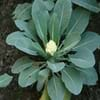Life Span
Annual or Biennial
Perennial
Type
Vegetable
Flowering Plants, Fruits, Trees
Origin
Europe, Northern Africa, Asia
Central Asia
Types
Not Available
Aceymac apple, Bailey Sweet apple, Dabinett apple, Nehou apple
Number of Varieties
Not Available
Habitat
Coastal Regions, Marshy ground, Wet ground
Hillside
USDA Hardiness Zone
Not Available
5-8
Sunset Zone
Not Available
A1, A2, A3, 8, 9, 10, 11, 12, 13, 14, 15, 16, 17, 18, 19, 20, 21, 22, 23, 24
Habit
Upright/Erect
Oval or Rounded
Flower Color Modifier
Bicolor
Not Available
Fruit Color
Tan, Brown
Green, Red
Leaf Color in Spring
Light Green
Dark Green
Leaf Color in Summer
Green, Light Green
Green
Leaf Color in Fall
Green, Light Green
Brown, Green, Light Yellow
Leaf Color in Winter
Not Available
Not Available
Leaf Shape
Irregular
Oblong
Plant Season
Spring, Summer
Spring
Sunlight
Full Sun
Full Sun, Partial shade
The pH of Soil
Neutral, Alkaline
Neutral
Soil Drainage
Well drained
Well drained
Bloom Time
Late Spring
Fall, Summer
Tolerances
Drought
Drought
Where to Plant?
Container, Ground
Ground
How to Plant?
Seedlings, Transplanting
Grafting, Seedlings, Transplanting
Plant Maintenance
Low
Medium
Watering Requirements
Keep ground moist, Requires regular watering
Medium
In Summer
Lots of watering
Lots of watering
In Spring
Moderate
Moderate
In Winter
Average Water
Average Water
Soil pH
Neutral, Alkaline
Neutral
Soil Drainage Capacity
Well drained
Well drained
Sun Exposure
Full Sun
Full Sun, Partial shade
Pruning
Remove damaged leaves, Remove shoots
Prune when plant is dormant, Remove dead or diseased plant parts
Fertilizers
Less fertilizing
All-Purpose Liquid Fertilizer
Pests and Diseases
Bacteria, Downy mildew, Fungal Diseases, fungus, Mosaic viruses, Pink Root, Red blotch
Aphids, Canker, Caterpillars, Powdery mildew, Root rot
Plant Tolerance
Frost
Drought
Flower Petal Number
Single
Single
Fragrant Bark/Stem
Yes
No
Foliage Texture
Coarse
Medium
Foliage Sheen
Glossy
Matte
Attracts
Insects, Mice, Rodents, Spider Mites
Birds
Allergy
Irritation to stomach
Mouth itching, Throat itching
Aesthetic Uses
Not Available
Not Available
Beauty Benefits
Good for skin, Improve skin condition, Moisturizing, Skin Problems
Not Available
Environmental Uses
Air purification, Food for animals, Food for birds, Food for insects
Air purification
Medicinal Uses
Cancer, Combats Stress, Eye Problems, High blood pressure, High cholestrol, Indigestion, Inflammation, Weight loss
Cancer, constipation, Diabetes, Diarrhea, Dysentry, Fever, Heart problems, Tooth ache
Part of Plant Used
Leaves, Seeds
Fruits
Other Uses
Employed in herbal medicine, Oil is used in perfume, soaps, creams, etc., Used As Food, Used for its medicinal properties, Used as a spice
Used As Food, Wood is used for making furniture
Used As Indoor Plant
Yes
No
Used As Outdoor Plant
Yes
Yes
Garden Design
Container, Edible, Herb / Vegetable
Fruit / Fruit Tree, Shade Trees, Showy Tree
Botanical Name
APIUM graveolens
Malus domestica
Common Name
Celery
Apple Tree
In Hindi
अजवायन
सेब का वृक्ष
In German
Sellerie
Apfelbaum
In Portuguese
Aipo
Macieira
Phylum
Tracheophyta
Magnoliophyta
Class
Magnoliopsida
Magnoliopsida
Clade
Angiosperms, Asterids, Eudicots
Angiosperms, Eudicots, Rosids
Tribe
Apieae
Not Available
Subfamily
Apioideae
Not Available
Number of Species
Not Available
Not Available
Importance of Celery and Apple Tree
Want to have the most appropriate plant for your garden? You might want to know the importance of Celery and Apple Tree. Basically, these two plants vary in many aspects. Compare Celery and Apple Tree as they differ in many characteristics such as their life, care, benefits, facts, etc. Every gardener must at least have the slightest clue about the plants he wants to plant in his garden. Compare their benefits, which differ in many ways like facts and uses. The medicinal use of Celery is Cancer, Combats Stress, Eye Problems, High blood pressure, High cholestrol, Indigestion, Inflammation and Weight loss whereas of Apple Tree is Cancer, constipation, Diabetes, Diarrhea, Dysentry, Fever, Heart problems and Tooth ache. Celery has beauty benefits as follows: Good for skin, Improve skin condition, Moisturizing and Skin Problems while Apple Tree has beauty benefits as follows: Good for skin, Improve skin condition, Moisturizing and Skin Problems.
Compare Facts of Celery vs Apple Tree
How to choose the best garden plant for your garden depending upon its facts? Here garden plant comparison will help you to solve this query. Compare the facts of Celery vs Apple Tree and know which one to choose. As garden plants have benefits and other uses, allergy is also a major drawback of plants for some people. Allergic reactions of Celery are Irritation to stomach whereas of Apple Tree have Mouth itching and Throat itching respectively. Having a fruit bearing plant in your garden can be a plus point of your garden. Celery has no showy fruits and Apple Tree has showy fruits. Also Celery is not flowering and Apple Tree is flowering. You can compare Celery and Apple Tree facts and facts of other plants too.





